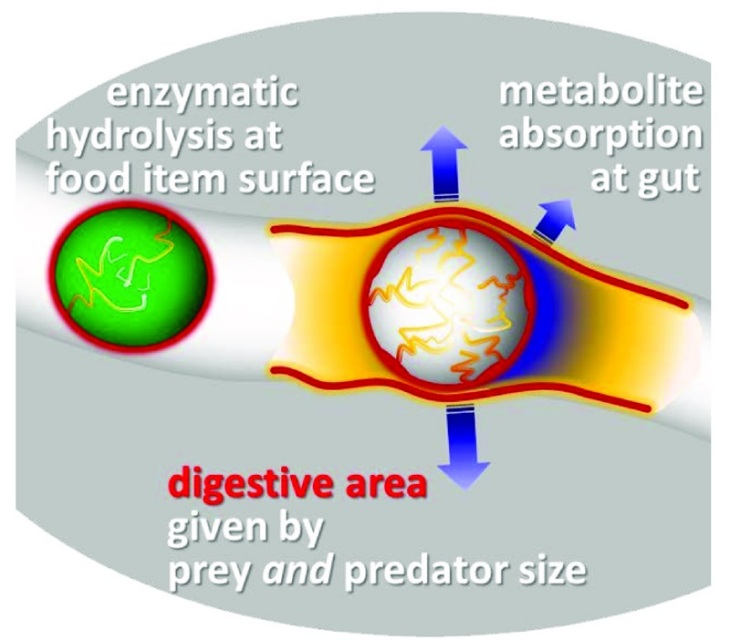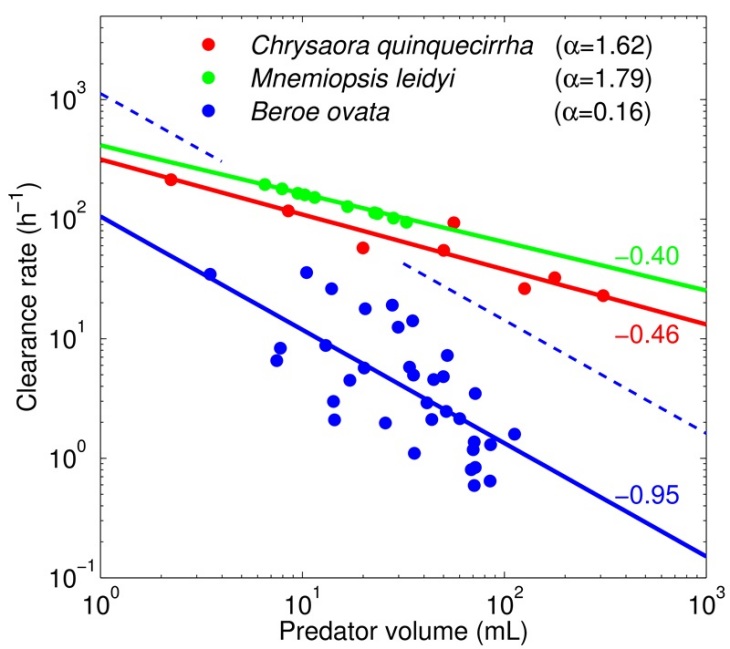Adaptive traits and biomechanics

One example is here illustrated for a biomechanistic relationship between body size and the maximal feeding rate in (gelatinous) zooplankton. Graphics: Wirtz/Hereon
Adaptation is one of the most pivotal processes in life. In coastal ecosystems, adaptation shapes the dynamics of all individuals (eg., phenotypic plasticity), populations (genotypic change), and communities (eg., species sorting). In order to describe such adaptive processes, we employ an approach called "adaptive trait dynamics”. It is based on the idea that biological systems optimize their 'traits' to maximize their fitness, and it applies across many scales and levels of biological systems, for very different life forms ranging from bacteria, plankton, and even tohuman societies. Depending on the specific system under question and temporal scales of interest, the optimization process may reflect distinct mechanisms like evolution, physiological acclimation and learning.

One example is here illustrated for a biomechanistic relationship between body size and the maximal feeding rate in (gelatinous) zooplankton. Graphics: Sevinc/Hereon
The process of trait optimization critically depends on what is "good" for the system such as an algal cell or community. Optimization goal is determined by the dependency of the growth rate to fundamental traits such as size, feeding mode, or metabolic strategy and trade-offs that determine the 'costs' of acquiring traits in terms of organismal performance. There usually exist countless ways of formulating such trade-offs, therefore, a central task in our development of trait-based models is to devise growth-trait dependencies that are accurate and preferably reflect mechanistic laws.
See also the abstract of our Dynatrait project.
